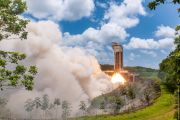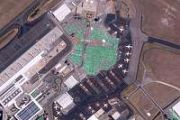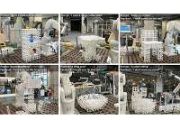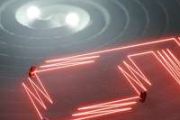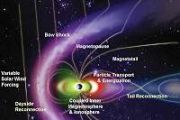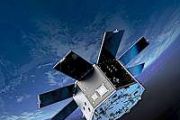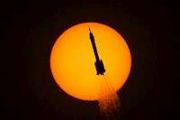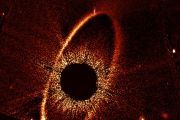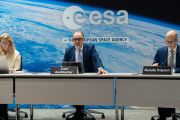
Copernical Team
VLBA produces first full 3-D view of binary star-planet system
 By precisely tracing a small, almost imperceptible, wobble in a nearby star's motion through space, astronomers have discovered a Jupiter-like planet orbiting that star, which is one of a binary pair. Their work, using the National Science Foundation's Very Long Baseline Array (VLBA), produced the first-ever determination of the complete, 3-dimensional structure of the orbits of a binary pair of
By precisely tracing a small, almost imperceptible, wobble in a nearby star's motion through space, astronomers have discovered a Jupiter-like planet orbiting that star, which is one of a binary pair. Their work, using the National Science Foundation's Very Long Baseline Array (VLBA), produced the first-ever determination of the complete, 3-dimensional structure of the orbits of a binary pair of UVA joins Artemis missions to seek traces of extraterrestrial life
 Was there ever life on the moon? What about on other planets? With the U.S. slated to blast off soon to orbit the moon - its first trip there in 50 years - the University of Virginia and NASA's Artemis space missions seek to answer big questions like these, while pushing the scope of what can be analyzed on alien soils.
The new collaborative research will take the form of a roving, ground-
Was there ever life on the moon? What about on other planets? With the U.S. slated to blast off soon to orbit the moon - its first trip there in 50 years - the University of Virginia and NASA's Artemis space missions seek to answer big questions like these, while pushing the scope of what can be analyzed on alien soils.
The new collaborative research will take the form of a roving, ground- NASA's Juno Mission Reveals Jupiter's Complex Colors
 NASA's Juno spacecraft observed the complex colors and structure of Jupiter's clouds as it completed its 43rd close flyby of the giant planet on July 5, 2022.
Citizen scientist Bjorn Jonsson created these two images using raw data from the JunoCam instrument aboard the spacecraft. At the time the raw image was taken, Juno was about 3,300 miles (5,300 kilometers) above Jupiter's cloud tops,
NASA's Juno spacecraft observed the complex colors and structure of Jupiter's clouds as it completed its 43rd close flyby of the giant planet on July 5, 2022.
Citizen scientist Bjorn Jonsson created these two images using raw data from the JunoCam instrument aboard the spacecraft. At the time the raw image was taken, Juno was about 3,300 miles (5,300 kilometers) above Jupiter's cloud tops, Cornell astronomers show how terrain evolves on icy comets
 With an eye toward a possible return mission years in the future, Cornell University astronomers have shown how smooth terrains - a good place to land a spacecraft and to scoop up samples - evolve on the icy world of comets.
By applying thermal models to data gathered by the Rosetta mission - which caught up to the barbell-shaped Comet 67P/Churyumov-Gerasimenko almost a decade ago - they s
With an eye toward a possible return mission years in the future, Cornell University astronomers have shown how smooth terrains - a good place to land a spacecraft and to scoop up samples - evolve on the icy world of comets.
By applying thermal models to data gathered by the Rosetta mission - which caught up to the barbell-shaped Comet 67P/Churyumov-Gerasimenko almost a decade ago - they s After NASA's asteroid impact, ESA's Hera comes next
 This month NASA's DART spacecraft will collide with the smaller of the two Didymos asteroids in deep space, attempting to shift its orbit in what will be humankind's first test of the 'kinetic impactor' planetary defence technique. Meanwhile, down on the ground, ESA's follow-on mission to Didymos has reached its own crucial milestone.
The main 780-m diameter Didymos asteroid is orbited by
This month NASA's DART spacecraft will collide with the smaller of the two Didymos asteroids in deep space, attempting to shift its orbit in what will be humankind's first test of the 'kinetic impactor' planetary defence technique. Meanwhile, down on the ground, ESA's follow-on mission to Didymos has reached its own crucial milestone.
The main 780-m diameter Didymos asteroid is orbited by Crime-scene technique identifies asteroid sites
 Analysing the charred remains of plants can confirm the locations of asteroid strikes in the distant past, new research shows.
Based on estimates of crater-producing asteroid strikes in the last 11,650 years (known as the Holocene), only about 30% of impact sites have been located.
Until now, there has been no way to distinguish between normal land structures and very small asteroid
Analysing the charred remains of plants can confirm the locations of asteroid strikes in the distant past, new research shows.
Based on estimates of crater-producing asteroid strikes in the last 11,650 years (known as the Holocene), only about 30% of impact sites have been located.
Until now, there has been no way to distinguish between normal land structures and very small asteroid Rocket Lab completes first test fire of reused Rutherford Engine
 Rocket Lab USA, Inc (Nasdaq: RKLB) has successfully test fired a reused Rutherford first stage engine for the first time - a significant technical achievement in the Company's efforts to make its Electron launch vehicle the world's first reusable orbital small rocket.
Rocket Lab conducted the full duration, full-thrust test fire of the refurbished Rutherford engine earlier this week at the
Rocket Lab USA, Inc (Nasdaq: RKLB) has successfully test fired a reused Rutherford first stage engine for the first time - a significant technical achievement in the Company's efforts to make its Electron launch vehicle the world's first reusable orbital small rocket.
Rocket Lab conducted the full duration, full-thrust test fire of the refurbished Rutherford engine earlier this week at the NASA readies for Saturday Moon rocket launch attempt
 The stars appear to be aligned for NASA's Moon rocket to finally blast off on Saturday, with weather forecasts favorable and technical issues that postponed the launch earlier this week resolved.
Liftoff is scheduled for 2:17 pm local time (1817 GMT) from Kennedy Space Center in Florida, with the potential for up to a two-hour delay if necessary.
The chance for favorable weather conditio
The stars appear to be aligned for NASA's Moon rocket to finally blast off on Saturday, with weather forecasts favorable and technical issues that postponed the launch earlier this week resolved.
Liftoff is scheduled for 2:17 pm local time (1817 GMT) from Kennedy Space Center in Florida, with the potential for up to a two-hour delay if necessary.
The chance for favorable weather conditio Color change in space materials may help measure degradation remotely
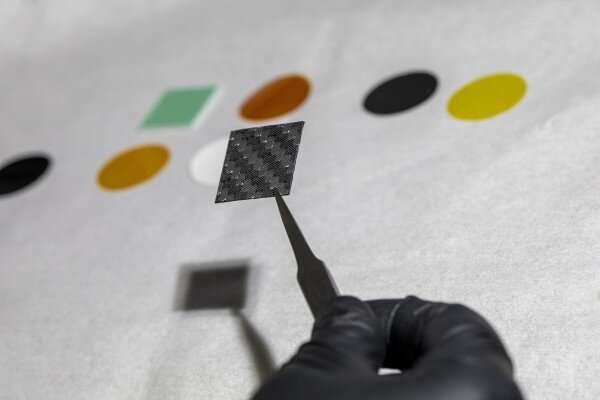
For the next six months, a camera system on the exterior of the International Space Station (ISS) will be snapping photos of more than a dozen different material samples, gathering detailed information that will help researchers determine how—and why—the harsh conditions of space affect these materials. Among the issues to be studied are color changes that may indicate the degradation caused by exposure to the environment in space.
A key goal of the research will be to correlate the color changes that occur under low-Earth orbital (LEO) exposure with variations in the materials' properties—such as structural strength, chemical composition, and electrical conductivity—to determine how these spectral changes might allow scientists and engineers to visually assess deterioration.
We're heading to the moon and maybe Mars. So who owns them?














